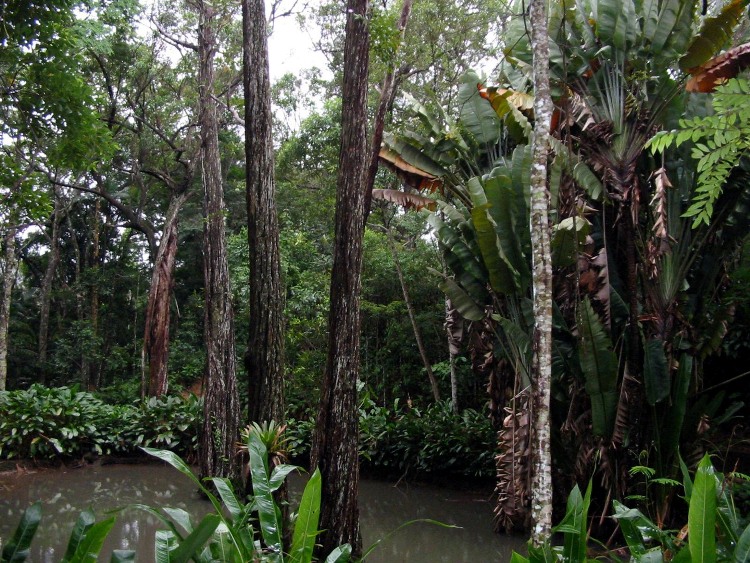Beautiful beaches, ‘fio dental’ stringkinis and religious followers of futebol is the common portrait painted of Rio - and an accurate one at that. But while time devoted to the seaside and at least one sporting match are must-dos, there is plenty more to be seen and done in a vibrant city like this.
Bright green, yellow and blue flags flutter from windows, shop doors and railings. T-shirts emblazoned with mottos like ‘I heart Brazil’ or ‘Proud to be a Carioca’ – a nickname for the city residents that beckons sensuality and passion for life – are as common as the colorful graffiti depicting the same sentiments across town.
To say the people here are prideful of their heritage is an understatement. As one strolls through the lush, tree-lined streets, the sense of confidence is evident even in the way everyone walks – especially by the waterside, where strikingly fit and tanned specimens go about their day.
Physicality is a notable trait of the people of Rio. So is its outdoor life. On Sundays, the city reduces four lanes of coastal traffic to two, opening the other tracks to cyclists and runners. Walking along the sidewalk at Ipanema Beach is like taking a step back to when the 90s rocked California – joggers, skateboarders and rollerbladers draped in loosely-fitted, beyond-bright threads are the picture of cool as they cruise past in their designated lane.

The powder-like sand promises just as much activity, with games of volleyball, futebol and futevolei – volleyball where players use only their feet and heads. Beach chairs are readily available, and so is everything else you might need for a day in the sun: boisterous beach vendors will sort you out with flip flops, hats and sarongs – and they’ll feed you too. Drinks range from acai or mate-flavored iced tea and lemonade to coconuts and beers, best paired with snacks of cheese grilled over coals, shrimp on the Bar-B or esfihas – savory pastries stuffed with spinach, meat or cheese.
It’s easy to spend a full day soaking in the sun without ever moving a muscle. If you do so, however, leave valuables at home. As in many other big metropolises, Rio has its fair number of pickpockets – not wearing any jewelry and packing beach gear in a small backpack is best. When you go in for a dip, make sure someone keeps an eye on your stuff.
Rio is half city, half mountainous jungle. Combining the two aspects together makes for endless days of sightseeing and discovery. Hiking is an excellent way to see this metropolis from a birds-eye view, and possibly even some of the local wildlife – on our first trek we came across a common marmoset monkey.
Sprawling across some 32 kilometers, the Tijuca Forest – a hand-planted rainforest claimed to be the largest urban woodland in the world – is an excellent spot for a day of exploring. Besides housing hundreds of species of plants and animals, it is also home to one of the Mata Machado favela (Brazilian term for slums), where one can catch a glimpse of Rio’s most urban roots. As renowned as some of the city’s other famous landmarks, favelas offer a completely different perspective to the main tourist sites. Formerly dangerous no-go areas, many are now safe and open, welcoming visitors on tours and music nights at bars held within the communities.

Within Tijuca Forest also lies Rio’s most iconic sight, Cristo Redentor (Christ the Redeemer). The stunning Art Deco sculpture – dating back to 1922 and one of the seven ‘new wonders of the world’ - stands arms outstretched atop the 710-meter-high mountain of Corcovado. While most people take the train up to see it, a high-intensity two-hour hike from the Jardim Botânico neighborhood at the foot of Corcovado offers a rewarding alternative to reach the peak. Plan it so you end the climb near sunset and watch Christ light up.
For more hardcore hikers, the mountain of Pedra da Gávea is possibly Rio’s most difficult climb. Composed of granite and gneiss, the highland has an elevation of 844 meters, making it one of the highest mountains in the world to end directly in the ocean. Unsurprisingly, it offers spectacular views of the city.
A stretch of water in the heart of the city, Lagoa Rodrigo de Freitas is also one of Rio’s picturesque spots, encircled by a 7.2 kilometer path that’s a haven for idle walkers, cyclists and joggers. Bikes are available for hire from stands along the east side of the lake, as are paddleboats. If you’re there for sunset, grab a caipirinha at one of the many kiosks lining the lakeside and watch locals and fellow travelers walk by.
For deeper insights into the city’s cultural heart and soul, the cobblestoned streets of Santa Teresa and Lapa beguile the eye with enchanting crumbling mansions and art-filled corners like the Escadaria Selarón – a flight of steps covered in more than 2,000 tiles from 60 countries around the world created by Chilean-born Brazilian artist Jorge Selaron.
Pedra do Sal, in the Saúde neighborhood of Centro, is also an atmospheric but run-down setting rich in charm and history. A settlement of African immigrants back in the 17th century, the area was a former slave market before becoming a cultural hub for the population of Bahia, a neighboring state.
The area – particularly Pedra do Sal Square – is in fact an integral part of the story of samba. It is here that the early carnival parades that define so much of Rio’s identity are said to have originated, at a time when the port-side location made the area a bleak focal point for the black community.
Fortunately, the music that arose from that era continues today, with the neighborhood widely regarded as one of the best ‘rodas de samba’ in Rio, attracting fleet-footed dancers, professional musicians and straight-up enthusiasts from all over the city who pour into the area straight from work.
A quintessentially carioca night out, Monday nights here are democratic, casual and have an unbeatable soundtrack. Joining the party is ridiculously good fun – and an honest, feel-good glimpse of the wondrous and carefree attitude that makes Rio such a dazzling place.
Cariocas call it the Cidade Marvilhosa – the marvelous city – there can’t be much argument about that.
COMING FOR THE CUP?

Know that feelings are mixed about the use of government funding for the event. This is the most expensive World Cup to date, and little has been spent to benefit the general population. Forced evictions to clear way for stadium expansions have resulted in frequent strikes, which often affect city transport.
As a general rule, exercise safety precautions and be smart and sensible. That said, don’t live in fear of going out and enjoying the city. It is safe to walk around – just don’t stick out like a sore thumb. If you need to pick up World Cup tickets, collect them at either Casarão General Severiano: Av. Venceslau Brás, 72 Botafogo or Cidade das Artes, Av. das Américas, 5300 Barra da Tijuca.
Haven’t booked accommodation? You might be in luck! The Rio Times and the Ministry of Tourism report that the estimated figure of 600,000 foreign visitors is looking less likely. Airlines – especially TAM – along with hotels are now releasing seats and rooms they originally thought would be scooped up for steep prices. Brazil’s biggest tour operator, CVC, is also offering discounts of 70 percent on flights and 30 percent on travel packages.






















0 User Comments